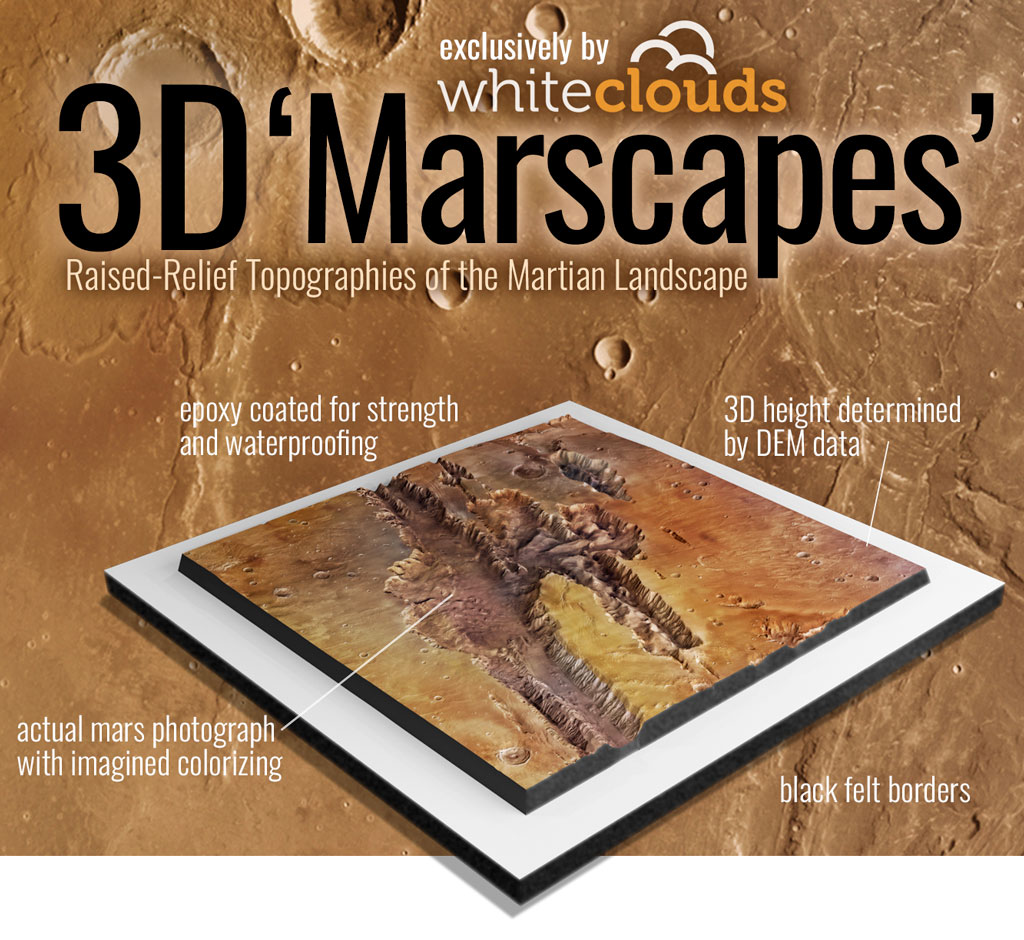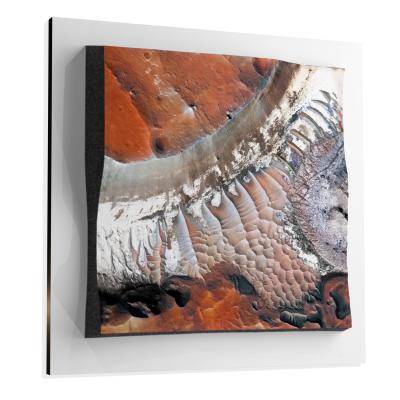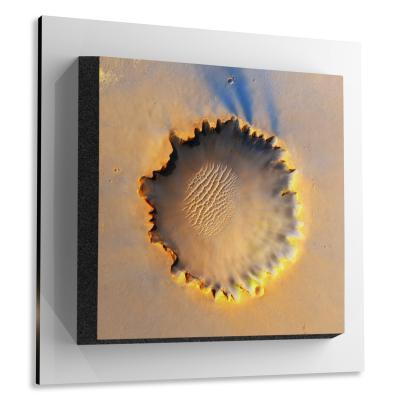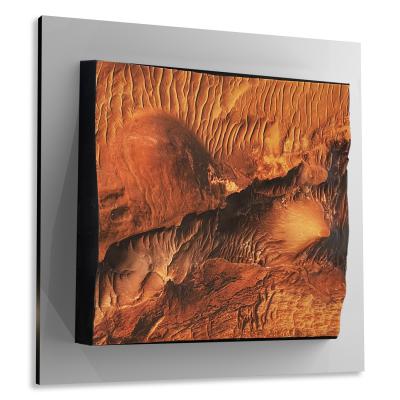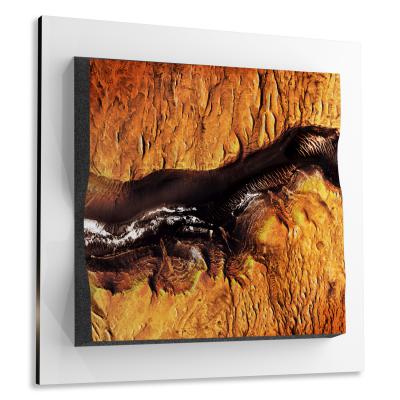Ice on Mars
Ice on Mars
We Build Custom 8K Mars Canvas Prints of Ice on Mars
Did you know we make
custom
8K Mars Canvas Prints

and
3D Marscapes

Ice on Mars
Ice on Mars is not merely a topic of scientific curiosity but a key element that can reshape our understanding of the planet’s history, climate, and potential to sustain life. This comprehensive report addresses the various aspects of Martian ice, including its types, characteristics, locations, and its effects on the planet’s climate, geomorphology, and potential for human settlement.
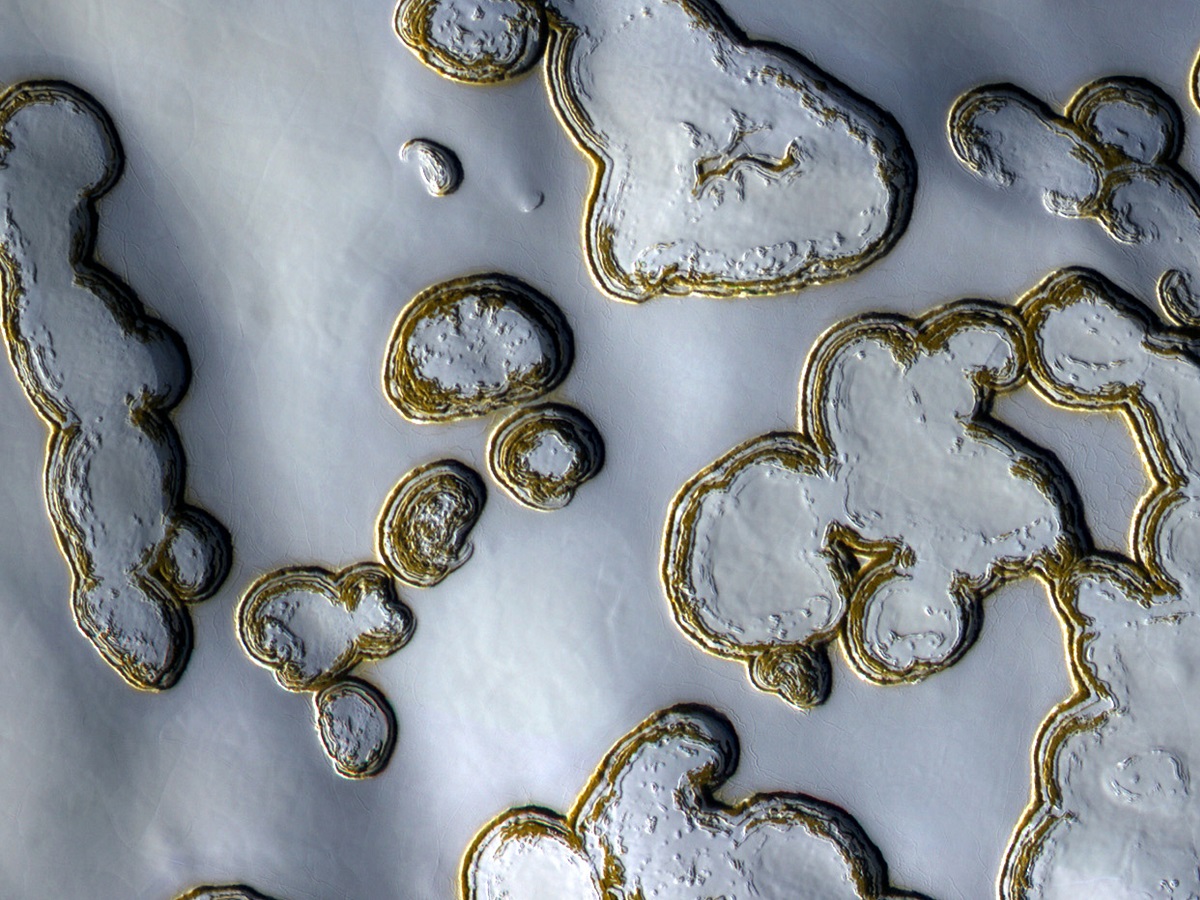 Carbon Dioxide Ice in the Late Summer
Carbon Dioxide Ice in the Late Summer
Types of Ice on Mars
Mars, often called the Red Planet, is a celestial body of endless fascination, in part due to its multifaceted icy terrains that add a unique complexity to its geology and climatology. Scientists have primarily categorized the ice on Mars into three significant types, each with unique properties and roles in the Martian environment.
The first and perhaps the most talked-about type is water ice. This form of ice is not just a surface phenomenon but also exists in subterranean layers. It is most prominently found in the polar caps, which are massive reservoirs of frozen water. The existence of water ice beneath the surface and at the poles has far-reaching implications for our understanding of the planet’s history, as well as for the potential for life as we know it. It has also ignited discussions about the feasibility of future manned missions to Mars, since this ice could potentially serve as a water resource for astronauts.
The second type of ice that garners attention is Carbon Dioxide Ice, commonly known as dry ice. Unlike water ice, dry ice on Mars is not a permanent fixture throughout the year. It manifests seasonally, often covering extensive portions of the planet’s surface, and then sublimating away as temperatures rise. This form of ice has a significant role in driving seasonal processes, impacting the weather and potentially contributing to localized climate variations. Understanding the cycle of dry ice’s appearance and disappearance could help us grasp the complex dynamics of Mars’ thin atmosphere.
Lastly, the planet hosts what can be termed as mixed ice. This is an intricate mixture of water ice and dry ice, which occasionally also contains Martian dust particles. This combination adds another layer of complexity to the scientific models that try to simulate Martian conditions. Mixed ice zones might behave differently from areas containing only one form of ice, and the interactions between the two kinds of ice—along with Martian dust—could lead to novel geological or climatic phenomena that scientists have yet to fully understand.
Advertisement
Sample Marscapes
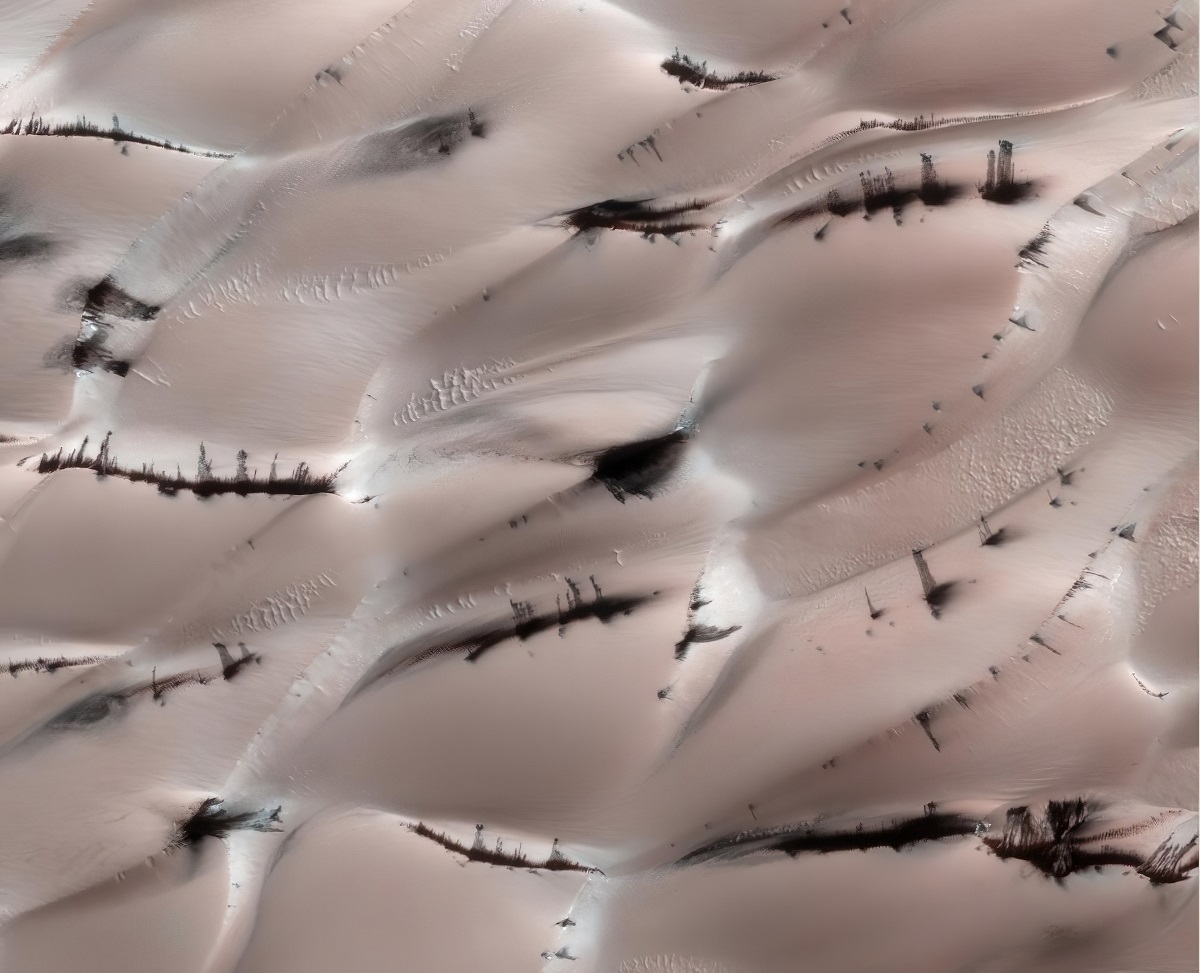 Icy Northern Dunes
Icy Northern Dunes
Characteristics of Martian Ice
The attributes of Martian ice are a treasure trove of scientific intrigue, offering a complex blend of physical and chemical properties that tantalize researchers and space enthusiasts alike. One of the most striking aspects is the stable existence of water ice under the existing environmental conditions on Mars. This stability is not a trivial matter; it has a plethora of far-reaching implications. On a scientific level, the stability of water ice suggests that the current Martian atmosphere and temperature range can support certain forms of water, a crucial factor in astrobiological studies that attempt to assess the potential for life on the planet. From a more practical viewpoint, this stable water ice could serve as a critical resource for future human explorers, offering not only a source of water but also possibly contributing to the production of oxygen and rocket fuel.
In terms of its chemical makeup, Martian ice is a veritable Pandora’s box of mysteries. While the water ice is chiefly pure, it isn’t entirely devoid of other elements. Trace amounts of salts and other minerals have been detected in some samples. These minor components may appear insignificant but could be monumental in shaping our understanding of Martian geology. Salts and minerals in the ice could point to past interactions between ice and liquid water, or possibly even to volcanic activity, giving scientists crucial clues to piece together the planet’s geological history. Moreover, these impurities could be key markers for understanding potential biological processes, as salts and minerals are often essential for organic activity.
An added layer of intrigue is added by the polar ice caps, which are not just static blocks of ice but intricate, layered archives that hold the climatic history of Mars. These layers are akin to the rings of a tree, each potentially representing different climatic epochs on Mars. Scientists believe that these layers could help decode changes in temperature, atmospheric composition, and even point to periods of significant geological events like volcanic eruptions or asteroid impacts. Essentially, the polar ice caps serve as frozen time capsules, possibly preserving millions of years of Martian history.
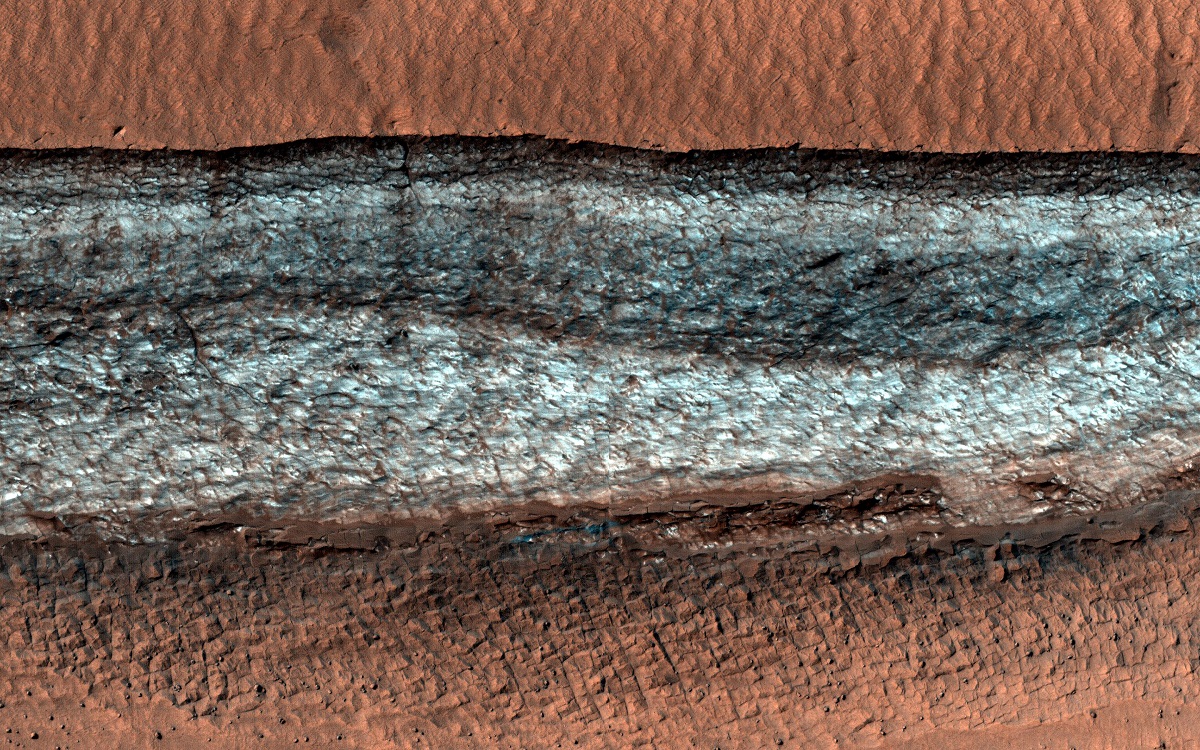 Cliffs of Ice
Cliffs of Ice
Distribution and Locations
When discussing the geographic dispersion of ice on the Red Planet, the Martian polar caps often steal the spotlight, and for good reason. These polar ice reservoirs are colossal repositories of water ice, and their stability makes them a consistent point of study and observation. They serve as a direct contrast to the volatile seasonal ice flows found elsewhere and act as longstanding bookmarks in the planet’s climatic and geological narrative. As year-round fixtures, the polar caps offer an opportunity for ongoing monitoring, helping scientists understand not just the ice itself but also the seasonal variations and long-term climate trends on Mars.
Yet, Mars never ceases to mystify, and its icy landscapes are no exception. Beyond the polar caps, there exists a multitude of other fascinating regions that offer their own surprises, shattering conventional assumptions about where ice should or shouldn’t be found on such a planet. For example, mid-latitude and equatorial zones—areas not typically associated with icy deposits on other planets—on Mars are known to harbor subterranean glaciers and concealed pockets of icy material. These hidden icy treasures compel scientists to rethink theories about Martian hydrology, including the mechanisms behind water transport and storage across different terrains and latitudes.
Further adding to the complexity, remote observations and rover data point toward intermittent or seasonal flows on the slopes of Martian hills and craters. These intriguing features are thought to be potentially indicative of transient liquid brines. These brines could form as a result of subsurface ice layers melting and mixing with salts, giving rise to temporary liquid solutions even in the extremely cold and low-pressure conditions on Mars. If verified, these flows could represent a dynamic interface between solid ice and liquid water, further complicating our understanding of the water cycle on Mars.
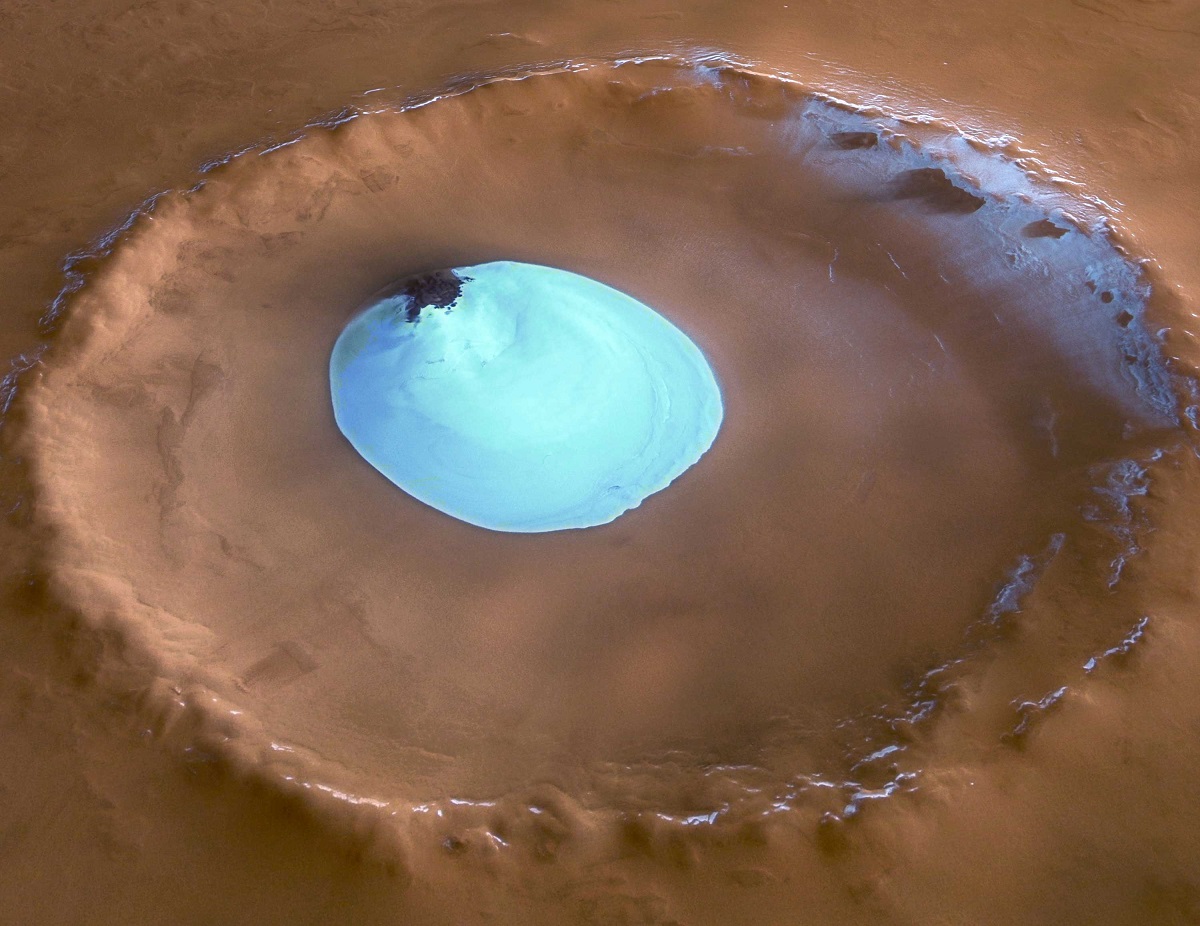 Mars Crater Ice
Mars Crater IceRole in Martian Climate
Ice plays a pivotal role in shaping the climate of Mars. The thermal properties of the icy surfaces, particularly their ability to reflect sunlight, contribute to maintaining the planet’s thermal equilibrium. Moreover, these ice deposits influence what exists of the Martian water cycle by contributing to potential subsurface repositories of liquid water, thereby playing a role in localized climate systems.
Geomorphological Impacts
Martian ice is not a passive resident of the planet; it actively shapes the landscape. Through processes of erosion and deposition, the movement and behavior of ice carve unique geological features like gullies and rills. These could potentially be the result of ice-related erosional mechanisms, further complicating our understanding of Mars’ surface processes.
Implications for Human Exploration
The significance of Martian ice extends into the realm of future human exploration. Its presence could be game-changing as a vital source of water for manned missions to Mars. Additionally, the same ice deposits could potentially serve as foundational materials for constructing habitats, offering a dual utility that could be invaluable for extended human settlement.
Scientific Significance
Beyond the immediate practical considerations, Martian ice holds considerable scientific importance. For example, the layered structures found in polar ice caps could reveal invaluable information about the climatic conditions of past epochs on Mars. Moreover, Mars’ icy environments could possibly be suitable habitats for extremophile forms of life, thereby making them a key focal point for astrobiological research.
Ice on Mars is an integral aspect of the planet that impacts its geology, climate, and the feasibility of future human missions. Understanding its various forms and behaviors is crucial for advancing our scientific knowledge and for the planning of future explorations.
By probing deeper into the intricacies of Martian ice, we can unravel the complex geological history of Mars, assess its climatic shifts, and pave the way for human exploration. A greater understanding of ice on Mars will not only enrich our knowledge of the planet but could also provide critical resources and insights for future Martian habitats.
This comprehensive report serves as a critical resource for understanding the multi-faceted aspects of ice on Mars, equipping us for the scientific and exploratory challenges that lie ahead.
Check out our 3D Mars Learning Center for more information on Mars and Ice on Mars. You can also learn more at: NASA Mars Exploration.
More About Mars
Contact us today to learn more about our 3D services and how we can help you achieve your goals.
